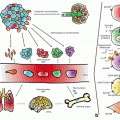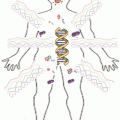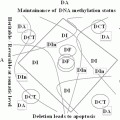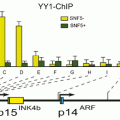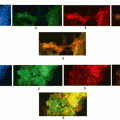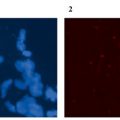Study
Year
Study population
Method
Main Result
1-(Snell et al. 2008)
2008
Familial breast cancer without BRCA1or BRCA2 mutations
MethyLight, MS-HRM (Methylation specific high resolution melting)
Hypermethylation of BRCA1 in tumors, low-level promoter methylation of BRCA1 in WBC
2-(Widschwendter et al. 2008)
2008
Post menopausal women
Methyl light assay
ER-alpha target (ERT) genes, and polycomb group target (PCGT) genes
Factors like estrogens leave an imprint in the DNA of cells that are unrelated to the target organ and indicate the predisposition to develop a cancer
3-(Choi et al. 2009)
2009
Early stages breast cancer patients
Tandem mass spectrometry & quantitative bisulfite pyrosequencing
WBC DNA hypomethylation is independently associated with development of breast cancer
4-(Flanagan et al. 2009)
2009
Bilateral breast cancer
Enzyme based enrichment and microarray
ATM gene body hyper methylation (intragenic repetitive element) in cases versus controls
5-(Cho et al. 2010)
2010
Breast cancer patients
Methyl light (RASSF1A, APC, HIN1, BRCA1, CYCLIND2, RARbeta, CDH1 and TWIST1) and three repetitive elements (LINE1, Sat2 and Alu)
Significant correlations in the methylation of Sat2M1 between tumors, adjacent tissues and WBC DNA. A significant difference in methylation of Sat2M1 between cases and controls
6-(Wong et al. 2010)
2011
Breast cancer patients
(< 40
years)with no BRCA1 germ line mutations
Methylight & MS-HRM “for BRCA1
Peripheral blood methylation was associated with a 3.5-fold increased risk of having early onset breast cancer
7-(Wojdacz et al. 2011)
2011
Breast tumors with paired patients bloods
MS-HRM (RASSF1,APC, BRCA1)
Methylation of these genes in tumor and WB genome are not dependent
8-(Wu et al. 2011)
2011
Girls with family history of breast cancer / girls without family history
MethyLight & pyrosequencing
(LINE1, Sat2 and Alu)
Global WBC DNA was associated with family history of breast cancer
9-(Brennan et al. 2012)
2012
667 case769 control from three large cohort
Methyl light assay
WBC DNA methylation levels at ATM could be a marker for breast cancer risk
10-(Wu et al. 2012)
2012
Breast cancer patients &their unaffected sisters
Methylight & pyrosequencing (LINE1,sat2,Alu)
No association between breast cancer and LINE-1 and Alu methylation. Sat2 methylation was statistically significantly associated with breast cancer risk
11-(Xu et al. 2012)
2012
1055 Breast cancer patients & 1101 control
LUMA
Global promoter hypermethylation in WBC was associated with breast cancer risk
12-(Hansmann et al. 2012)
2012
Familial breast cancer without BRCA1or BRCA2 mutations
Bisulfite pyrosequencing
Constitutive epimutations in BRCA1 and RAD51C are relevant to ovarian and breast cancer pathogenesis
13-(Heyn et al. 2013)
2013
Monozygotic twin pairs discordant for breast cancer
High-resolution (450 K) DNA array
Hypermethylation of DOK7 occurs years before tumor diagnosis (a powerful epigenetic blood-based biomarker)
10.3 DNA Methylation Pattern for Breast Cancer Classification and Prognosis
Breast cancer is a heterogeneous disorder with many various outcomes and responses to therapy. It has basically been categorized by histopathological characteristics which are based on tumor size, number of involved lymph nodes and distant metastasis (TNM staging), and by immunochemical recognition of cell surface receptors, including estrogen receptor (ER), the progesterone receptor (PR) and the human epidermal growth factor receptor 2 (HER2). Yet, in many patients, staging breast tumors cannot predict prognosis or therapeutic outcome due to the heterogeneity of the disorder. In recent years, molecular procedures concentrating on the profiling of gene expression have been utilized for breast tumors. Alterations in gene expression pattern that bring up the program of a cell from a normal state to a malignant condition, include multiple genetic circuitries and creating a profile of gene expression that settle the cell’s crystal clear identity. Such signatures have been reported to categorize subtypes of breast tumors. Categorizations according to the gene expression profiles have extended the exact classification of breast tumor by emerging the identity of cells, with certain persistence on existence of stem cells and the essence of the immune response to the tissue tumor. These current molecular-based categorizations are named ‘intrinsic subtypes of breast tumors’ since they define the molecular profile of the breast cancer cell instead of its stage. Many clear tumor types and normal breast-like intrinsic classification (including luminal A and B, Her-2, basal-like and normal breast like) of breast tumors were explained before (Perou et al. 2000).
These various subtypes are identified in all breast tumor stages, even in the initial steps, and utilize as predictor of initial prognosis and therapeutic responds. They have provided prognostic value in management of breast tumors and they are considered now as a guide in prediction of patient recurrence, survival and response to chemotherapy. Yet, there are already main challenges in exact initial prediction of breast tumor, prognostication, and therapeutic response prediction. There is critical space for developing our predictive and prognostic means, certainly in guidance of therapeutic choices.
Since DNA methylation is pivotal in programming gene expression, an alteration in methylation from a normal to diseased condition should be reflected in a DNA methylation pattern that includes multiple gene pathways. Recent investigations recommended that DNA methylation signatures will extend our ability to categorize breast cancer and predict outcome beyond what is now possible. DNA methylation is a robust biomarker, comprehensively more steady than RNA or proteins (which are needed in gene expression profiling in different levels from RNA to protein), and is so a promising target for the improvement of current methods for identification and prognosis of breast tumor and other disorders. There are two approaches in the investigations of DNA methylation markers for breast tumors classification and prognosis: candidate gene methylation studies and genomic approaches. Some researchers targeted candidate genes methylation in breast tumors and their association with different clinical outcomes such as response to therapy and disease free survival (DFS). In this approach candidate genes selection was based on our previous knowledge of candidate genes functions as tumor suppressor genes or genes with known prognostic values. While in genome wide methylation studies, researchers are seeking DNA methylation signatures which are associated with clinical outcomes and survival.
10.3.1 Candidate Gene Approaches
The basic concept driving study of DNA methylation changes in diseased conditions was that restricted sets of candidate genes were pivotal in initiation and progression of disease. Nevertheless, unbiased approaches could probably detect new genes and novel functional gene pathways that are concerned with a disease, while candidate approaches basically confirmed genes that are previously indicated to be involved. Initial investigations examined the association between aberrant methylation of particular CpGs islands in tumor suppressor genes and different stages of breast cancer (Dickinson et al. 2004). Some researchers are investigating the association between the methylation of genes with known prognostic values in breast cancer and different outcomes. For instance, we could indicate that hypermethylation of ERα is associated with poor prognosis subtypes breast tumors such as Her2 + and basal-like (Izadi et al. 2012a).
In other study methylation-specific PCR (MS-PCR) of six tumor suppressor genes was performed to provide a methylation signature of primary breast tumors, and the methylation status of various genes were shown to be significantly correlated with several prognostic factors (Shinozaki et al. 2005). However, our present information of the functional pathways involved in physiological and pathological processes recommend that it is highly improbable that investigation of a few particular CpG islands status will be adequate for staging and provide exact information about outcome of breast cancer.
10.3.2 Whole Genome Approaches
The expression profiles involve coordinated alterations in transcription of various genes creating a “signature” that characterizes the stage of breast cancer. Tumors with BRCA1 and BRCA2 mutations are discriminated with the Expression signatures (Hedenfalk et al. 2001), supporting the fact of unique molecular profiles for subtypes of breast tumor. So, it is probable that, similar to expression profiles, DNA methylation patterns involve several coordinate alterations in multiple genes and those particular signatures of DNA methylation over a wide spectrum of genes discriminate subtypes of breast tumors and their prognostic value with high accuracy.
Over the past decade, more universal procedures using differential methylation hybridization were developed to examine a considerable number of CpG islands in both cell lines and tumor specimen. This procedure utilized the restriction enzymes that sensitive to methylation states for enrichment of the methylated DNA fragments, after hybridization to CpG island arrays including 1000 CpG islands. The original concept of the informative DNA methylation status in cancer is aberrant methylation of CpG islands is remained. A pioneering investigation by the Huang group (Yan et al. 2000) used this method to find the signatures of DNA methylation by comparing 28 paired primary breast cancer and normal tissue specimens, and to evaluate whether patterns of particular CpG hypermethylation associated with pathological factors in the studied patients. The research show that decreased differentiation of the tumors correlated with the increasing the number of hypermethylated CpG islands. This was an initial evident of the potential of wide DNA methylation signatures for differentiating and classification of breast tumor. The main limit of this examination is its bias towards aberrant methylation of CpG islands.
Cell-culture-based approach is another way to obtain DNA methylation signatures that determine breast cancer subtypes and prognosis. Recently, The utility of distinctly phenotyped but highly associated breast tumor cell lines for defining patterns of DNA methylation that differentiate and classify breast cancers has been investigated (Andrews et al. 2010; Fang et al. 2011). Two MDA-MB-231 breast cancer cell lines including MDA-MB-468GFP and MDA-MB-468GFP-LN (the further derived from a lymphatic metastasis) compared in the survey. This investigation (Andrews et al. 2010) demonstrated wide changes in DNA methylation that involve both hypomethylation and hypermethylation, and evaluate their correlation with gene expression signature and copy number variation. The association between several hypomethylation and hypermethylation events with the copy number variations recommended a linkage of these two phenomena that requires further investigations. The modifications in DNA methylation was found in highly affected particular networks and functional pathways in a highly organized way. These data support the assumption that wide signatures determine variations in different metastatic state between closely associated breast cancer cells. Nevertheless, the main limitation of this investigation is the utility of breast cancer cell lines. It is not obvious what proportion of the DNA methylation signature detected in vitro will be correlated with primary breast tumors. If this is accurate in tumor tissues as well, such broad signatures could be useful in prognosis and have a great effect on therapeutic strategies of breast cancer.
Another approach is the use of genome-wide procedures to define stage-specific DNA methylation patterns for classification of primary breast cancers. Recently, several procedures have been developed to define a genome-wide signature of the DNA methylation, such as bisulfite conversion coupled to next-generation sequencing;methylated DNA immunoprecipitation (MeDIP) after hybridization to high-density illumina 27 and 450 K arrays or next-generation sequencing that evaluate the methylation changes in particular CpG islands in the genome wide scale. Although genome-wide sequencing is still exclusively expensive for larger sample sizes in the population studies, array procedure are being often used to define DNA methylation signatures of tumors in primary clinical specimen instead of cell lines. Recently, a whole genome-procedure was used to detected a group of genes that demonstrated a correlation with disease-free survival (Hill et al. 2011). Furthermore, Fang et al. (2011) utilize the 27 K array to define DNA methylation patterns that would classify breast tumors based on their metastatic state. The investigation first detected a “methylator” phenotype, a harmonic methylation of a group of CpG islands in some of tumors, that they described “breast cancer CpG island methylator phenotype” (B-CIMP) .These observations correspond to the previously defined methylator phenotype in colorectal cancer. The methylator phenotype was related to the low risk of metastasis and improved outcome autonomously from different breast cancer prognostic factors, such as estrogen receptor status in tumors. This provides evident proof for the potency of DNA methylation signatures to differentiate breast tumors prognosis beyond common classifications. In the recent years, the application of genome-wide methods has enabled more study on the classification with prognostic value of DNA methylation signatures in breast tumors. Recent investigation recommends that DNA methylation signatures might provide knowledge both in the origin of tumor cells in a breast tumor and the microenvironment, especially the immune cell types, that are involved in the cancer (Dedeurwaerder et al. 2011a).
According to this evidence, a definite signature of T cell subtype gene expression could be identified in the tumor stroma samples (Kristensen et al. 2012). In this study they used a comprehensive method described ‘Pathway Recognition Algorithm using Data Integration on Genomic Models’ (PARADIGM) , unified DNA methylation signature, expression profiling of mRNA with microRNA and DNA copy number variation. The analysis was performed on about 110 breast tumors and then the PARADIGM clusters of the analyzed specimen were evaluated in two other breast tumor cohorts. The researchers detected important tumor and stromal signatures in the tumor and stroma populations, indicating that it is likely to acquire stromal molecular signatures without dissection of the stromal cells. Furthermore, they obtained informative chronic inflammatory signature in all breast tumors as well as molecular signatures that categorize subtypes of breast tumor cell. The robust predictor of better prognosis was a high T-helper 1 (Th1)/cytotoxic T-lymphocyte signature. The PARADIGM clustering extends classification beyond traditional immunohistochemistry, since discrimination was detected between two clusters within luminal A and luminal B breast tumors.DNA methylation signature will become significant as a diagnostic and prognostic marker in breast cancer just if it provides the classification beyond commonly used methods such as immunohistochemistry and mRNA expression analysis. Recently, some investigators (Dedeurwaerder et al. 2011a)analyzed whole-genome DNA methylation pattern by using the illumina 27 K arrays and recommend that DNA methylation profiling could extend common classifications of breast tumor subtypes. The investigation of 248 breast tissue tumor specimens showed an immune ‘signature’ in mixed tumor-stromal samples. DNA methylation profiles displayed six classes, three of which determined new classifications that were not categorized by expression subtypes, and these might represent different cells of origin (Dedeurwaerder et al. 2011b). Actually, if DNA methylation profiling is just informative in tumor tissue specimens, this restricted the use of such markers for utility in common follow-up.Biopsies are invasive procedures; therefore, it is highly improbable that they will take apart in common screening methods. Furthermore, even in breast cancer patients, biopsies are not appropriate for common follow-up procedure following surgery and notably when there is no obvious growth of tumor. Noninvasive procedures are required for initial classification and follow-up of therapeutic effect after surgery. However, it is likely that free-circulating tumor cells reveal the profiles of DNA methylation that are representative of the status of methylation in the tissue tumor. Informative DNA methylation profiles in breast tissue tumor cells observed in blood samples would be highly significant in early screening, diagnosis, classification and follow-up of the therapy respond. An important area of epigenetic studies in breast tumors is DNA methylation profiling of free-floating tumor cells to determine DNA methylation patterns of breast tumors in these free-floating cells. The initial studies have been focused on hypermethylated genes that are feathers of numerous tumors. For instance, researchers have indicated that it is probable to detect DNA methylation alteration in serum of breast cancer patients. Furthermore, It demonstrated that a set of methylated genes could generat highly sensitive and specific markers for breast tumor as well as prognostic value, as CIMP + in patients’ serum was correlated with a relative risk of relapse of 8.6 (Jing et al. 2010). However the prognostic and predictive values of DNA methylation based markers in breast cancer must be evaluated in future investigations. The pivotal challenge in this area is to obtain high-quality DNA methylation profiles that are validated in future investigations as specific and sensitive predictors for determination of prognosis and fallow up response to treatment. An additional research question is to ascertain whether DNA methylation profile would have advantages over common histopathological and immunochemical procedures.
10.4 Epigenetic Changes as Therapeutic Targets in Breast Cancer
Since the epigenetic modifications are potentially reversible processes, a large number of investigations have been mediated to provide information on this mechanism with the purpose of identifying effective treatments that target these modifications. The histone deacetylase inhibitors (HDACi) as well as demethylating drugs are under examination as single agents or in compositions with other systemic therapies. A large number of the preclinical studies have utilized the epigenetic treatments to re-express the silenced genes in cell lines. The high challenging issue has been the clinical utility of the laboratory findings and clinical effectiveness of them. For example, preclinical studies clearly showed that re-expression of the maspin gene can be achieved in breast cancer cell lines using histone deacetylase inhibitors (HDACi) and demethylating drugs, but the important inquiry is whether such a re-expression was obtained in a patient’s tumor or in another word “would it have any influence on clinical outcomes?” In spite of these challenging features of the therapeutic application of epidrugs, knowledge of the critical role of such therapies has been increased in breast cancer. Currently, all of the epigenetic therapies are in research stages in cancers and not sill considered standard of care in the bedside. The information about the potential application of these agents in breast cancer is providing in combination with targeted therapies, chemotherapy and radiotherapy to overcome therapeutic resistance and improve respond to treatment. Another interesting and developing field is investigation the role of epigenetic modifications in breast cancer prevention (Lustberg and Ramaswamy 2011).
10.4.1 DNMT Inhibitor Therapy
DNA methyl transferases (DNMTs) are enzymes which can transfer methyl group to DNA. DNMT inhibitors can block the function of these enzymes. Nucleoside analogues 5-vazacytidine (5-aza) and 5-aza-2′-deoxycytidine (decitabine) are most frequently researched DNMT inhibitors. One of the significant challenges of breast cancer treatment is tumors with estrogen receptor negative status which are not responding to antiestrogen therapies such as tamoxifen. The role of epigenetic modifications (especially CpG island methylation) in the regulation of ER gene expression is well understood. Despite the fact that more than two thirds of breast tumors synthesize estrogen receptor (ER), both de novo and acquired drug resistance to tamoxifen therapy are major clinical problems. Response to endocrine therapy is associated with the level of ER expression, and silencing of ER gene expression during the course of breast cancer treatment is one of the significant mechanisms of endocrine therapy resistance in ER positive tumors. A deep knowledge of the epigenetic modulation of ER gene give possibility for planning effective epigenetic therapies to override endocrine resistance to tamoxifen and other endocrine therapies including the aromatase inhibitors. Additionally, this approach creates new possibility to treat ER-negative tumors using the combination of epigenetic agents and hormonal therapy.
Demethylation of the ER gene CpG island and activation of ER gene expression and synthesis of functional ER protein have been promoted in ER negative human breast tumor cell lines with 5-aza treatment (Yang et al. 2000). Inhibition of DNMT1 by antisense or siRNA may increase responsiveness to 5-aza in ER-negative breast cancer cells (Robert et al. 2003). Furthermore, the combination of HDACi and DNMT inhibitors has synergistic effects (Yang et al. 2001a). Primary evidences about the influence of epidrugs on ER gene re-expression achieved from treatment of ER negative cell lines with DNMT inhibitors and HDACi. For example to investigate the influence of epidrugs on ER reactivation, ER-negative breast cell line MDA-MB-231, treated with demethylating agent 5-aza-2′-deoxycytidine. Interestingly treated ER negative cells restored the expression of ER mRNA and ER protein and the growth of cells treated with tamoxifen were inhibited significantly (Wang et al. 2006).
In another experience on MDA-MB-435 as an ER negative breast cancer cell line, combinatory therapy by aza and TSA (trichostatin A) showed that the mRNA of estrogen and progestron receptors was re-expressed (Fan et al. 2008) The proliferation assay in the treated cells showed that their growth was suppressed. Growth suppression in the treated cells was further decreased by addition of tamoxifen to the culture medium. In contrast, the proliferation of cells treated only with tamoxifen showed no difference compared with the untreated cells. In animal model study xenograft volume of MDA-MB-435 cells treated with aza and TSA was smaller than that of the untreated control cells. Ovariectomy in these animals could suppress the growth of aza and TSA treated xenograft.
Currently, we have not enough data on the clinical function of 5-aza or decitabine as a single drug for breast cancer treatment. Recently, A phase I multi-center clinical trial of decitabine in patients with advanced breast cancer who had poor respond to standard treatment was finished (NCT00030615) (http://clinicaltrials.gov). But the results of this clinical trial not formally published. Other nucleoside analogues as DNMT inhibitors including zebularine and 5-fluoro-2′-deoxycitine are in clinical development process (Cheng et al. 2004). In addition, an anti-sense oligonucleotide known as MG98 that particularly targets DNMT1 is under clinical development process.
In another investigation in a phase I trial, the combination of decitabine and vorinostat given consecutively showed tumor stabilization in 7 of 22 (32 %) examined patients with advanced solid tumors. Bone marrow suppression and gastrointestinal toxicities were dose limiting toxicities (DLT) in the mentioned study (Stathis et al. 2009).
The influence of addition of hydralazine and magnesium valproate to neoadjuvant doxorubicin and cyclophosphamide treatment for locally advanced breast cancer (LABC) was investigated in a proof-of-principle phase I study (Arce et al. 2006). Starting day 7 through completion of four steps of chemotherapy, selected cases received oral hydralazine and valproate. On day 8 these patients were evaluated with core biopsies and significant decrease of the global methylation was detected. Also HDAC suppression was detected in peripheral blood specimens on day 8 after this combination epigenetic therapy. The combination of chemotherapy and epigenetic therapy was well tolerated in most patients and the incidence of drowsiness was related to the increase of valproate to the treatment regimen. Exclusively, one (6.6 %) patient had a complete pathologic response in the condition that most cases had a clinical response. Followed by this proof-of-concept trial, patients with advanced breast cancer were gradually improving to overcome chemotherapy resistance in a phase II trial of adding hydralazine and valproate to the same chemotherapy regime (Candelaria et al. 2007). On this study, three patients were treated, two patients who had continued on paclitaxel were progressed on the same in addition to hydralazine and valproate and both continued. Another patient was progressed on the same ineffective hormone therapy in addition to the combined epidrugs treatments and had disease stabilization for 4.5 months. While responses to epigenetic therapies were observed in a few patients with genitourinary cancers, this way has not been progressed considerably in breast cancer.
10.4.2 HDACi Therapy
Histone deacetylases (HDAC) are a class of chromatin changing enzymes which remove acetyl groups from a histone protein. This change causes a more tight interaction between DNA and histones and compact chromatin conformation. Genes which are located in such chromatin environment cannot transcribe and will be silent. HDACi (histone deacetylase inhibitors) are a group of compounds that can inhibit the enzymatic activity of Histone deacetylases in cell. These inhibitors can reverse the silencing effects of histone deacetylation on gene expression. Also HDACi possess the anti-proliferative and pro-apoptotic properties affect on different malignant cell types (Stearns et al. 2007). Currently, Vorinostat (suberoylanilide hydroxamic acid) is the only HDACi approved by the US Food and Drug Administration (FDA).
HDACi up regulates the transcription of proapoptotic genes and cyclin-dependent kinase inhibitors like p21 and p27. Furthermore, HDACi increases acetylation of the Hsp90 molecular chaperone system and leading to decreasing their stabilization (Isaacs et al. 2003). As a consequence, proteosome targeting and degradation of various target proteins, such as AKT, ER, HER2 and c-Raf, are enhanced. Then degradation of client protein influences on multiple downstream pathways, such as increasing of pro apoptotic proteins including Bak and Bim and decreasing of antiapoptic proteins Bcl-2 and Bcl-xL (Bali et al. 2005). In preclinical condition, estrogen receptor is one of the Hsp90 client proteins which are most sensitive to downstream inhibition of Hsp90 (Thomas and Munster 2009). HDACi sensitize breast tumor cells to endocrine, HER2-targeted, and cytotoxic therapies by attenuating these signaling pathways.
Vorinostat is a component of the hydroxamic acid family of HDACi. It can suppress the proliferation of ER-positive as well as ER-negative breast cancer cell lines (Munster et al. 2001). Vorinostat and other HDACi such as LAQ824, down regulates p-Akt, Akt, and c-Raf, sensibilising ER-positive breast tumor cells to endocrine therapies such as tamoxifen (Fiskus et al. 2007). Suppression of HDAC2 by siRNA silences of both ER and PR expression and increases the influence of tamoxifen in ER-positive breast cancer cells (Biçaku et al. 2008). In addition, the combinatory therapy with vorinostat and docetaxel or trastuzumab leads to attenuated levels of c-Raf and AKT with synergistic effect in breast tumor cells (Bali et al. 2005). Furthermore, breast tumor cells sensitize to topoisomerase inhibitors after prolonged exposure to vorinostat (Marchion et al. 2004). Regarding to the encouraging preclinical findings, there are many ongoing clinical trials in breast cancer evaluating the influence of vorinostat together with endocrine therapy and cytotoxic drugs.
The results of a phase I clinical trial in patients suffering from advanced solid tumor and hematologic malignancies revealed that intravenously administration of vorinostat well tolerate. In the phase II study performed in advanced breast cancer with single-drug oral vorinostat, 4 of 14 patients (29 %) acquired stabilization of their tumors (range, 4–14 months). However, no case showed an objective responses. The most prominent side effects involved nausea, diarrhea, fatigue and lymphopenia (Luu et al. 2008).
10.4.3 Combination of HDACi and Endocrine Therapy
Based on hopeful preclinical result of combining HDACi with endocrine therapy, a phase II trial study of vorinostat together with tamoxifen was performed in metastatic breast tumor patients who had disease progression on past lines of hormone therapy (Munster et al. 2011). Seven patients (21 %) had a limited response and one with exclusive bone disease had an objective tumor response by PET/CT scan, while another four (12 %) patients had stable disease of more than 6 months. Observing two patients (5 %) with pulmonary emboli, the toxicity profile of the combination was confirmed in the median response duration of 8 months. Associated investigation indicated acetylation of histone H3 and H4 at day 8, recommending sufficient amount of vorinostat in the most of the patients.
In another effort, selected postmenopausal patients who had disease progression in spite of aromatase inhibitor therapy continued on the same aromatase suppressor and entinostat at 5 mg weekly on a 28-day cycle was added to their treatment regime. One patient had an approved limited response and one patient had stable disease more than 6 months. Based on initial biomarker evaluation, there was expansive lysine acetylation in histones and apoptotic state in peripheral blood cells with the addition of HDACi therapy.
Stay updated, free articles. Join our Telegram channel

Full access? Get Clinical Tree


